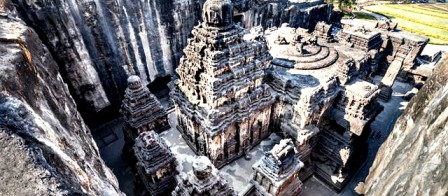Constituent Assembly – Political Science Study stuff & Notes
Making of the constitution
The Constitution of India was prepared by the Constituent Assembly which was constituted in 1946 under the Cabinet Mission Plan.
292 members of the Constituent Assembly were proposed to be indirectly elected by the members of the existing provincial assemblies by the method of proportional representation with a single transferable vote. In addition, 93 members were nominated by the rulers of native princely states. The seats of each province were distributed among the three main communities in proportion to their population - general, Muslim, Sikh.
After the partition of the country in 1947, the membership of the Assembly was reduced to 299 members. Of these, 229 members were elected by the provincial assemblies and the rest were nominated by the rulers of the native princely states. Most of the members were from the Congress party.
The senior-most member, Dr. Sachidanand Sinha, was elected as the temporary President of the Assembly. Subsequently, Dr. Rajendra Prasad was elected as the President of the Assembly.
The Assembly functioned with the help of a large number of committees and sub-committees.
The committees were of two types:
• relating to matters concerning with procedures,
• related important issues.
The most important committee was the draft committee. Dr. BR Ambedkar was the chairman of that drafting committee.
The meeting of the Constituent Assembly was held for 166 days spread the constitution was formed in a period of 2 years 11 months and 18 days. The Assembly had 11 sessions.
Some important Committees of Constituent Assembly and their Chairman:
| Committee on the Rules of Procedure | Rajender prasad |
| Steering Committee | Rajender prasad |
| Finance and Staff Committee | Rajender prasad |
Credential Committee | Alladi Krishnaswami Ayyar |
| House Committee | B. Pattabhi Sitaramayya |
| Order of Business Committee. | K.M. Munsi |
Ad hoc Committee on the National Flag | Rajendra Prasad |
Committee on the Functions of the Constituent Assembly | G.V. Mavalankar |
| States Committee | Jawaharlal Nehru |
| Advisory Committee on Fundamental Rights, Minorities and Tribal and Excluded Areas | Vallabhbhai Patel |
| Minorities Sub-Committee | H.C. Mookherjee |
| Fundamental Rights Sub-Committee | J.B. Kripalani |
| North-East Frontier Tribal Areas and Assam Exluded & Partially Excluded Areas Sub-Committee | Gopinath Bardoloi |
Excluded and Partially Excluded Areas (Other than those in Assam) Sub-Committee | A.V. Thakkar |
| Union Powers Committee | Jawaharlal Nehru |
Union Constitution Committee | Jawaharlal Nehru |
Drafting Committee | B.R. Ambedkar |
The 'Objective Resolution' was moved to the Constituent Assembly by Jawaharlal Nehru on 17 December 1946, which was adopted unanimously on 22 January 1947.
It was decided to celebrate 1929 as Independence Day at the Lahore session of Congress on 26 January 1930. Therefore, 26 January 1950 was decided as the day to implement the Constitution to celebrate the first Independence Day.
Read it:-
• This Constituent Assembly declares its firm and sole resolution to declare India as an independent sovereign republic and to form a constitution for its future rule;
• The territories which now comprise British India, the territories which now form the Indian states, and such other parts as are for India such as British India and the States as well as other territories which are to be constituted in independent India. Are ready. They all have a union.
• The aforesaid territories, irrespective of their present limits or such other as may be prescribed by the Constituent Assembly and thereafter in accordance with the law of the Constitution, shall maintain the status of autonomous units, exercising residual power and all powers simultaneously. And the functions of governance and administration, protecting and excluding such powers and functions as are vested in or entrusted to the Union, or as vested in or vested in the Union or as a result thereof.
• All the rights and rights of independent government, its constituent parts and organs are derived from the people.
• All the people of India will be guaranteed justice, socioeconomic and political: guarantee and equality, opportunity, and before the law; Freedom of thought, expression, belief, worship, vocation, association and action, subject to law and public morality.
• In which adequate security measures will be provided for minorities, backward and tribal areas, other backward classes.
• How will the integrity of the republic's territory and its sovereign rights over land, sea and air be maintained according to the law of justice and civilized nations
This resolution was adopted by the Constituent Assembly on 22 January 1947 with full consent. The assembly completed the work of constitution by 26 November 1949. The constitution was implemented from 26 January 1950. From that day on, India became a republic.









0 Comments